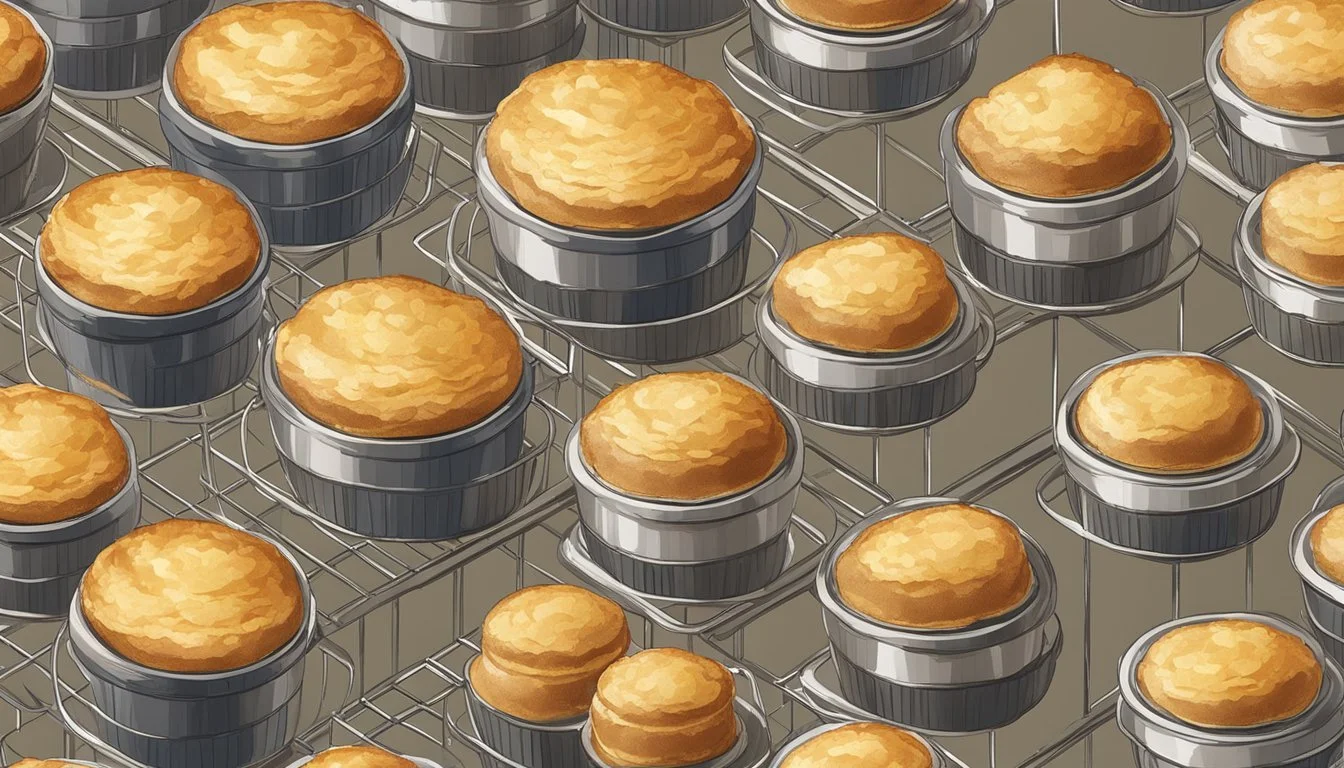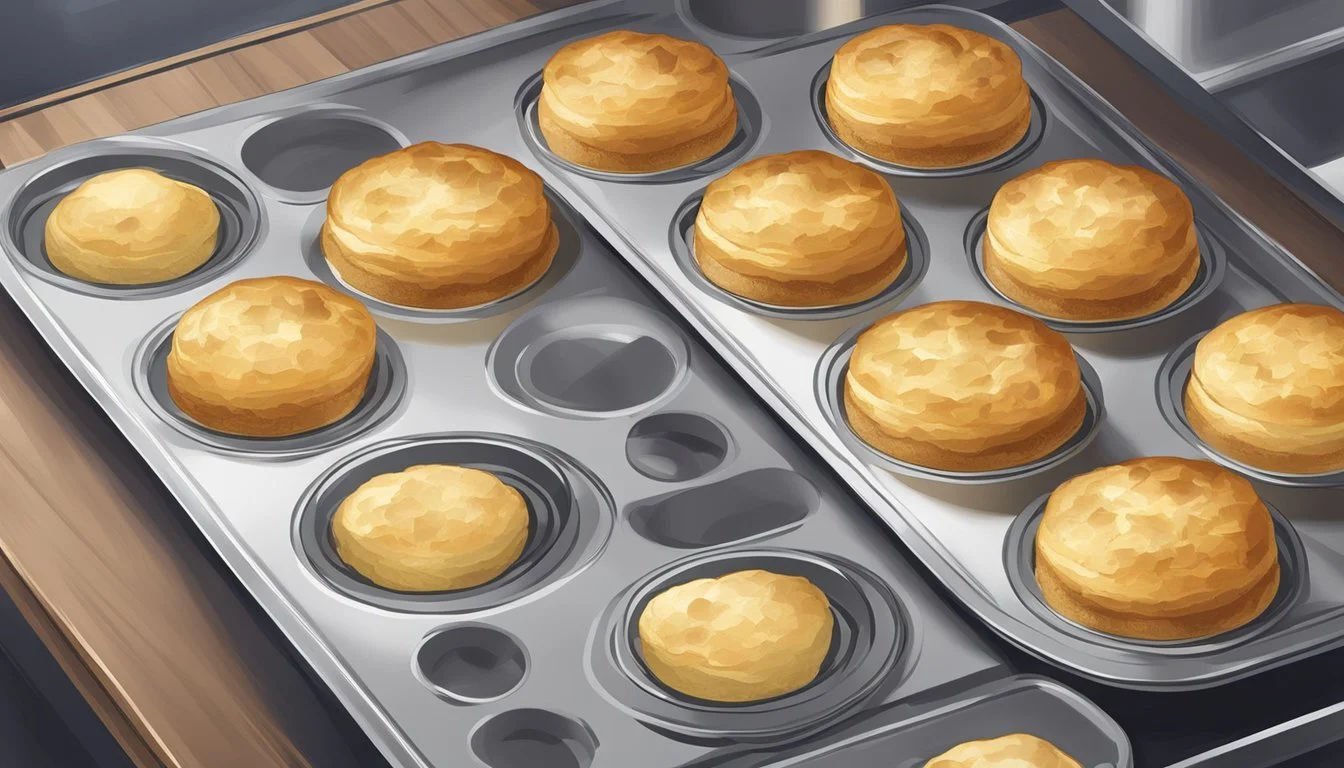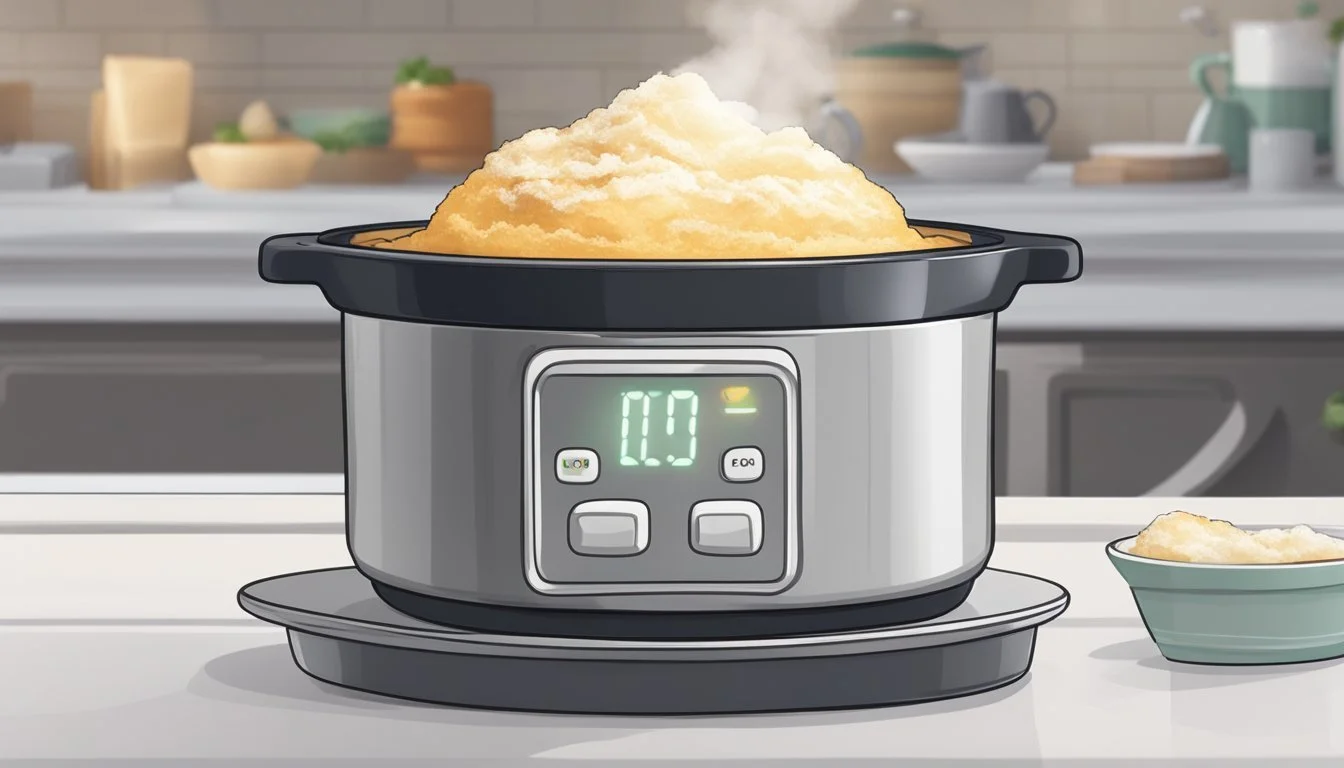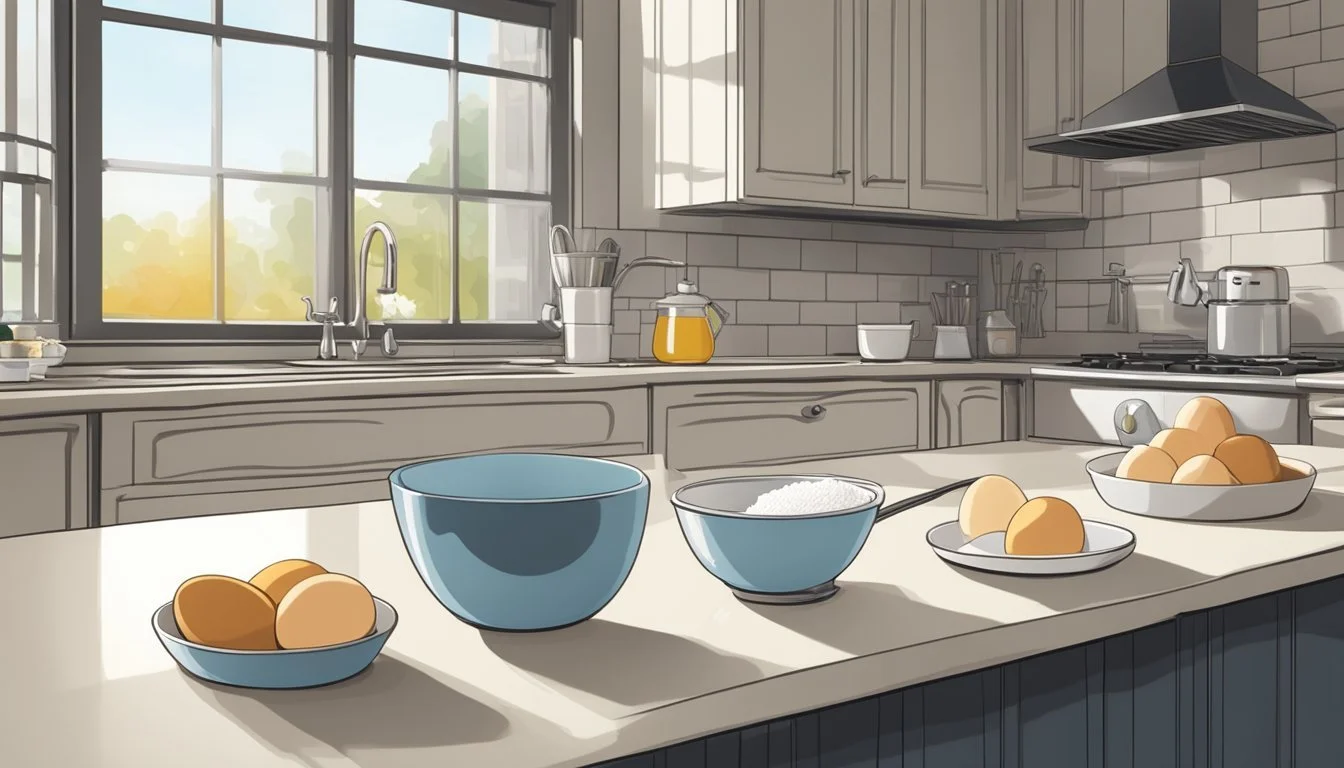How Long Do Freshly Prepared Soufflés Last?
Understanding Shelf Life and Storage
A freshly prepared soufflé is a delight to the senses, its airy puff and indulgent texture presenting the pinnacle of classic French cuisine. The fragile and ephemeral nature of soufflés is well-known—they are best enjoyed immediately after removal from the oven, when they are at their most splendid and lofty. These delicate dishes derive their signature rise from the air whipped into egg whites, which gives them a short window of prime edibility after baking.
However, the question of longevity arises when one is not able to serve the soufflé straight away. Ideally, soufflés should not be left out for extended periods, as they will slowly deflate and lose their characteristic texture. Their structural integrity is such that, with time, the once-fluffy interior settles into a denser form, and the delectable contrast between the crisp exterior and the soft core diminishes.
In instances where advance preparation is necessary, the uncooked soufflé batter can be made and stored in the refrigerator for a brief period. This allows for some flexibility in planning and execution without significantly sacrificing the quality of the final dish. Nevertheless, understanding that the freshest soufflé experience requires timing and immediate service is key to enjoying this revered culinary masterpiece.
Understanding Soufflés
Soufflés are a delicate culinary feat that hinge on the careful preparation and balance of their components, leading to their characteristic rise.
Components of a Soufflé
A soufflé consists primarily of two parts: the base and the egg whites. The base, often flavored with ingredients such as chocolate for desserts or cheese for savory dishes, gives the soufflé its distinctive taste. It typically contains:
Egg yolks: To enrich and add flavor
Flour: To stabilize and provide structure
Egg whites are crucial for the soufflé's lift. When beaten, they form airy bubbles that define the soufflé's texture.
The Science Behind Rising
The rise of a soufflé comes from the expansion of air within the protein matrix of beaten egg whites. When heated, the air trapped in the egg white foam expands, increasing the volume of the mixture and causing it to rise. This process is delicate, as the following need to be considered:
Temperature: Too hot, and the egg whites will set too quickly, too low, and the rise will be insufficient.
Handling: Gentle folding of the egg whites into the base is essential to maintain the airy bubbles.
Structure: Flour contributes to the scaffolding that helps hold the air bubbles in place as they expand, helping the soufflé rise straight and avoid collapsing.
Preparation Techniques
To ensure a successful soufflé, one must concentrate on the mastery of two crucial techniques: achieving stiff peaks from egg whites and the art of folding them into the base without deflating the mixture. These steps are paramount for a light and airy texture.
Achieving Stiff Peaks
To acquire stiff peaks, one starts with room temperature fresh eggs, which are less viscous and more amenable to whipping. The chef uses a whisk or an electric mixer on medium to high speed to beat the egg whites until they form stiff, glossy peaks. It's essential not to over-whip, which can make the whites grainy and dry, ultimately reducing their ability to sustain the structure of the soufflé.
Room Temperature Eggs: Begin with room-temperature eggs.
Speed: Whisk or beat at medium to high speed.
Appearance: Stop when peaks are stiff and glossy.
Folding Techniques
The technique of folding refers to the gentle incorporation of the beaten egg whites into the soufflé base. Careful folding is imperative to maintain the foam's structure and volume. One uses a spatula to cut through the mixture and then fold over, rotating the bowl quarter-turn with each fold.
Utensil: Use a spatula for optimal folding.
Method: Cut through the mixture, fold over, rotate the bowl.
Consistency: The final mixture should appear uniform with no white streaks.
Remember, these moments of precision will determine the soufflé's final texture and rise.
Cooking Soufflés
Crafting a soufflé requires precision, from preheating the oven to the baking process itself, ensuring a majestic rise without collapse.
Baking the Perfect Soufflé
To achieve a flawless soufflé, preheating the oven is non-negotiable; it should reach a stable temperature before baking begins. Baking demands a delicate balance of temperature and timing. Typically, a soufflé is baked at 375°F to 400°F, but one must always adhere to the specific recipe's instructions. The baking process itself should be undisturbed—no opening the oven door—as a steady oven temperature is pivotal for the soufflé to rise properly and cook evenly.
Preheat the oven before starting
Bake at 375°F to 400°F (check the recipe)
Do not open the oven door during baking
Common Soufflé Pitfalls
Several missteps can result in a soufflé that falls short of its potential. Overmixing or undermixing the base can compromise its delicate texture, while any residual grease or yolk in the egg whites can prevent them from achieving stiff peaks. Accuracy is key in measurement; too little sugar can cause the soufflé to be less stable and too much flour can make it dense. Finally, an uninterrupted cooking environment is essential, as vibrations or drafts can cause a soufflé to deflate.
Avoid overmixing or undermixing the batter
Ensure egg whites are free of grease for proper peaks
Measure ingredients accurately
Maintain a steady cooking environment without drafts or vibrations
Serving Recommendations
When freshly prepared, soufflés should be served immediately to enjoy their optimal texture and height. Pairing a soufflé with the right accompaniments can enhance the dining experience by complementing its delicate flavor and airy consistency.
Sweet Pairings
A sweet soufflé, often served as a dessert, is best enjoyed with a dollop of cream or a scoop of ice cream which provides a creamy contrast to the fluffy texture. Adding a sauce made from pureed fruit or a sprinkle of sugar can also accentuate the flavors. A simple table to illustrate sweet accompaniments:
Sweet Ingredient Serving Suggestion Cream Lightly whipped Fruit Fresh berries or compote Sugar Dusting of confectioner's
Savory Combinations
For savory soufflés, incorporating cheese introduces a luxurious meltiness and depth of flavor. A side of roasted vegetables or a lightly dressed salad adds freshness to balance the richness. For those desiring a more substantial meal, adding bits of cooked meat like ham or bacon provides savory notes and contrast. Here are some savory pairings:
Cheese: Aged cheddar or gruyère.
Vegetables: Sauteed spinach or oven-roasted asparagus.
Meat: Crumbled bacon or diced prosciutto.
Storage and Freshness
Proper storage extends the life of a freshly prepared soufflé while maintaining quality. For optimal freshness, one should consider refrigerating or freezing the dish if not consumed immediately.
Refrigerating Soufflés
Refrigerating a soufflé can preserve its quality for a short period. The batter can be stored in the fridge up to 24 hours before baking—store in the ramekins to be used for baking, covering it tightly with plastic wrap to prevent a skin from forming. Once baked, a soufflé can be kept in the refrigerator for up to 2 days; however, its texture might alter slightly.
Freezing and Defrosting
For longer storage, freezing is recommended. Wrap the cooked soufflé tightly in plastic wrap followed by a layer of aluminum foil, then place it in the freezer where it can remain for an extended period. When ready to serve again, one must defrost the soufflé slowly in the refrigerator before reheating gently to best restore its original texture and quality.
Reheating and Presentation
When reheating a soufflé, one must choose between using a microwave or an oven to achieve the best results. Both methods require careful attention to maintain the structure of the soufflé post-reheat. The goal is to restore the warmth and possibly a bit of the rise without causing collapse or drying out the delicate dish.
Microwave vs. Oven Reheating
Microwave:
Time: Brief, usually around 30-60 seconds.
Texture: Can become slightly rubbery if overheated.
Risk of Collapse: Higher, due to rapid heating.
Oven:
Temperature: Preheat to 320°F (160°C).
Time: Approximately 5 minutes, but watch closely.
Texture: More likely to restore the soufflé's lightness and keep it fluffy.
Color: Can reintroduce a golden hue to the top if done carefully.
Maintaining Structure Post-Reheat
To maintain a soufflé's structure after reheating:
Do Not Overheat: Overheating can cause a soufflé to collapse.
Gentle Handling: Move and handle the soufflé as little as possible after reheating to prevent deflation.
Serve Immediately: A soufflé should be served as soon as possible after reheating to appreciate its delicate structure.
Advanced Tips and Tricks
In the world of soufflé making, the differentiator between good and outstanding often lies in the application of advanced techniques. Expert bakers use their knowledge to enhance flavors and textures, ensuring their soufflés stand out.
Utilizing Flavor Enhancers
A chef's secret to intensifying the taste of a soufflé lies in the judicious use of flavor enhancers. They incorporate ingredients like cream of tartar or a dash of lemon juice not only to add a subtle tang but also to stabilize the egg whites, resulting in a more pronounced and pure flavor profile.
Add 1/8 teaspoon of cream of tartar per egg white to improve stability.
Lemon juice: A few drops can be added to the egg whites before whisking to help them reach maximum volume.
Mastering Textural Elements
Achieving the perfect texture in a soufflé calls for finesse and control during preparation. Fine skills come into play when folding in egg whites—overmix, and one deflates the air bubbles crucial for the lift, undermix, and one ends up with uneven pockets of egg white.
Folding Technique: Gently incorporate egg whites in stages to maintain their structure.
First Stage: Mix a small amount of egg whites into the base to lighten it.
Second Stage: Fold in the remaining egg whites with a spatula, rotating the bowl to ensure even distribution.
In these advanced techniques, the goal is to craft a soufflé that's as flavourful as it is visually impressive, with a texture that's light yet satisfyingly rich on the palate.
Soufflé Varieties
A soufflé, with its light and airy texture, can come in various flavors tailored to satisfy different palates. From savory cheese to sweet chocolate, the following are popular variations treasured by both home cooks and professional chefs.
Classic Cheese Soufflé
The Classic Cheese Soufflé is a savory delight, showcasing the perfect melding of eggs, creamy béchamel sauce, and a generous helping of cheese—typically Gruyère, cheddar, or Parmesan. This soufflé recipe sets the standard for elegance in French cuisine and requires precision to ensure a majestic rise and delicate texture.
Decadent Chocolate Soufflé
For those with a sweet tooth, the Decadent Chocolate Soufflé stands out as a dessert favorite. It combines the richness of melted chocolate with the lightness of beaten egg whites to form a dessert that is both luxurious and feather-light. When executed correctly, it results in a sumptuous, molten center encased within a pillowy exterior.
Variations on the Traditional Recipe
Soufflé recipes invite innovation, and many cooks enjoy adding their own twist to the traditional base. They might incorporate seasonal fruit, herbs, spices, or alternative types of cheese and chocolate to create a unique taste experience. Each variation adheres to the basic soufflé foundation but allows for personal expression within the culinary art form.
Tools of the Trade
To ensure the success of a soufflé, the cook must be equipped with the proper tools. The precise selection of equipment can greatly influence the outcome of this delicate dish.
Essential Equipment for Soufflé Making
When preparing a soufflé, certain pieces of equipment are indispensable:
Whisk or Electric Mixer: Vital for beating egg whites to the desired peak. A whisk is suited for those comfortable with manual work, whereas an electric mixer can provide consistency and efficiency.
Spatula: A flexible spatula is necessary for folding the beaten egg whites into the base mixture with gentle precision.
Béchamel Base Tools: A saucepan and a wooden spoon or whisk are required for preparing the béchamel, which is often the base for savory soufflés.
Selecting the Right Ramekins
Ramekins come in various sizes, but typically, a soufflé ramekin should be:
6 to 8 ounces (177 to 237 milliliters) in capacity for individual servings.
Made of oven-safe, thick ceramic that ensures even heat distribution.
Straight-sided and buttered with upward strokes to aid the soufflé's rise.
Choosing the correct soufflé dish is also critical:
Size: A large soufflé dish of about 1.5 to 2 quarts (1.4 to 1.9 liters) is best for family-sized servings.
Material: Porcelain or ceramic dishes with deep, straight sides help to promote a steady rise.
Preparation: The interior should be properly buttered or lined with sugar or breadcrumbs for sweet and savory versions, respectively, to prevent sticking and encourage upward growth.
With these tools at hand, one can confidently embark on the art of soufflé-making, where precision and proper technique pave the way to culinary excellence.
The Role of Soufflés in Cuisine
The iconic soufflé plays a distinct role in culinary arts, upheld for its versatility and finesse both in fine dining and at-home preparations. Restaurants often feature soufflés as a testament to their chefs' skill, while home cooks embrace this dish for its ability to elevate an ordinary meal into something remarkable.
Soufflés in Fine Dining
In the realm of fine dining, soufflés are synonymous with sophistication and culinary expertise. Restaurants pride themselves on their ability to deliver a perfectly risen, airy soufflé to discerning patrons. The dish's delicate structure and the precise timing required for serving make it stand out as a benchmark of a chef’s prowess. Desserts like the chocolate soufflé are particularly revered, often gracing the menus of upscale establishments and signifying the end of a gourmet dining experience.
Making Soufflés at Home
For the home cook, crafting a soufflé can transform a dining experience from simple to exceptional. It's a venture that requires attention to detail, from the proper folding of egg whites into the base to achieving the desired rise. Home kitchens become a space for culinary creativity, with variants including cheese, chocolate, or seasonal vegetables incorporated into the soufflé. A well-executed soufflé can impress guests and lend a touch of restaurant-quality luxury to a homemade meal.
Conclusion
When preparing a soufflé, one of the key questions is how long the dessert can last once it is made. The nature of soufflés requires precise timing, particularly if they are meant to impress guests at a dinner party. Fresh soufflés should ideally be baked and served immediately to capture their characteristic rise and fluffy texture. However, for those who need to plan ahead, the batter can be prepared and refrigerated.
Make-ahead technique allows the batter to be stored in the baking ramekins, covered with plastic wrap, for up to 24 hours. This preparation retains the quality of the soufflé and provides a manageable approach for hosts.
It's crucial to ensure the following when making a soufflé:
Eggs are at room temperature to help achieve optimal volume.
Vessels are buttered with upward strokes to foster the batter’s rise.
Remember, when dealing with chilled soufflé batter, there might be a slight decrease in the expansive rise. Nonetheless, the soufflé should still offer a delightful experience when properly executed.
In conclusion, while a soufflé is a dessert best enjoyed fresh, it can be accommodated into a dinner party schedule with proper technique. This approach offers a balance between the meticulous timing of baking a soufflé and the practicalities of entertaining guests.












